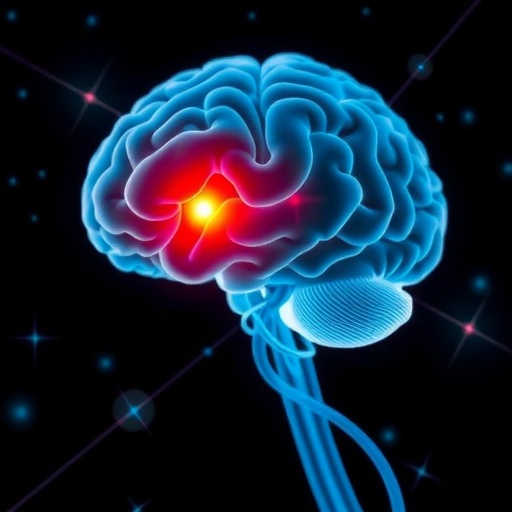When Jill Knaus first entered the Adult Hydrocephalus Program at the University of Calgary, she was struggling with sudden and unyielding changes in her mobility that left her dependent on a cane and then a walker. Her once steady gait had deteriorated so severely that she found herself shuffling rather than walking, dragging her feet in a way she had never experienced before. This marked decline in balance and coordination drastically altered her daily life, robbing her of the independence and freedom she had previously enjoyed.
Knaus vividly recalls the frustration and isolation she felt during this period. “I wasn’t walking anymore, not properly,” she explains. “My feet were dragging when I tried to step, and I actually wore through five pairs of shoes.” The simplest activities, like taking her dog Lucy for a stroll, became daunting tasks she could no longer manage. Forced by fear of falling and injury, she made the difficult decision to move into an assisted living facility, a step she believed was premature but necessary for her safety.
Her story is representative of many individuals suffering from idiopathic Normal Pressure Hydrocephalus (iNPH), a condition that has long been under-recognized and often misdiagnosed. Dr. Mark Hamilton, the Director of the Calgary Adult Hydrocephalus Program at the Cumming School of Medicine, sheds light on this elusive neurological disorder. iNPH is a brain condition characterized by an abnormal accumulation of cerebrospinal fluid (CSF) in the ventricular system of the brain. Unlike hydrocephalus caused by trauma, hemorrhage, or infection, iNPH has no identifiable external cause, hence the term “idiopathic.”
What makes iNPH particularly insidious is its clinical presentation, which includes a triad of symptoms: gait and balance disturbances, cognitive decline, and urinary incontinence. These symptoms progress insidiously and can often be mistaken for other neurodegenerative diseases or age-related decline. The prevalence of iNPH is increasingly recognized in elderly populations, with studies estimating that about 1.5% of people in their late 60s and as many as 7.7% of those in their mid-eighties have the condition. This translates to a staggering statistic where roughly one in thirteen individuals at the age of 86 may be living with undiagnosed iNPH.
Until recently, the effectiveness of interventions for iNPH was a matter of debate. However, a landmark randomized, double-blind, placebo-controlled clinical trial, published in the prestigious New England Journal of Medicine, has established new ground. The trial investigated the impact of surgical diversion of CSF through a shunt system—small, surgically implanted tubes designed to drain excess fluid from the brain’s ventricles—to alleviate the symptoms of iNPH. This method aimed to reduce intracranial pressure and restore normal neurological function by correcting the fluid imbalance.
The trial’s robust methodology involved 99 participants across 17 centers in Canada, the United States, and Sweden, highlighting an international, multicentric approach to understanding this condition. Participants were randomly assigned to either receive an active shunt or a placebo procedure where the shunt was implanted but not activated. The double-blind design ensured that neither the patients nor the evaluators knew which group each participant belonged to, eliminating bias and providing high-quality evidence.
Results were striking. At the three-month follow-up, 80% of patients with active shunt devices demonstrated significant and clinically meaningful improvements in walking speed and balance, with marked reductions in fall risk and enhanced functional capability. Cognitive assessments further revealed improvements in executive functions and mental processing speed, underscoring the broad neurological benefits of shunting. In contrast, those in the placebo group showed minimal or no changes, reaffirming the therapeutic effect of the intervention.
Notably, the dramatic efficacy observed in trial participants led to the study being halted early. Such early termination is uncommon and indicates a clear treatment benefit so profound that continuing to withhold active intervention from the placebo group would be ethically questionable. Dr. Hamilton, a neurosurgeon at Foothills Medical Centre and principal investigator of the trial, emphasizes the significance of these findings: “This trial was crucial in dispelling previous uncertainties among neurologists and neurosurgeons regarding the efficacy of shunt surgery for iNPH. We now have incontrovertible evidence that shunting can dramatically improve patients’ walking, balance, and overall independence.”
The safety profile of shunt surgery for iNPH was also reinforced by the study. Complication rates were low and consistent with expectations for neurosurgical procedures, reinforcing the risk-benefit ratio in favor of surgery. This evidence paves the way for improved guidelines, better diagnostic algorithms, and increased access for patients suffering from this debilitating yet treatable condition.
Although Jill Knaus was not a participant in the clinical trial, she underwent shunt surgery in early 2024 and describes her own transformation as life-changing. No longer reliant on mobility aids, she reports walking her dog Lucy up to four times daily and experiencing significant weight loss and renewed vitality. “I feel much younger and happier,” she says. “I’ve finally got my life back.” Jill’s story illustrates the profound personal and societal impact that improved recognition and treatment of iNPH can have.
The growing awareness of idiopathic Normal Pressure Hydrocephalus signals a crucial paradigm shift in managing neurological disorders affecting the elderly. For decades, patients with iNPH faced the prospect of inexorable decline, with little hope of intervention. However, the combination of advanced imaging techniques, refined clinical assessment, and now, definitive surgical treatment options heralds a new era of hope and rehabilitation.
Looking ahead, further research is warranted to optimize surgical techniques, personalize treatment, and explore adjunct therapies for iNPH. Investigations into the molecular underpinnings of CSF regulation and ventricular dynamics could reveal novel targets for pharmacological intervention, potentially complementing or even replacing surgical shunting in the future. The trajectory of neurodegenerative disease management is poised to benefit immensely from these advances.
The successful trial also underscores the importance of multidisciplinary collaboration across neurology, neurosurgery, geriatrics, and rehabilitation medicine. Comprehensive care models that include early diagnosis, patient education, and rehabilitation can maximize outcomes and quality of life for those affected by iNPH. As the population ages globally, health systems will increasingly encounter this condition, necessitating widespread clinician awareness.
Ultimately, the journey of patients like Jill Knaus from uncertainty and disability to restored independence exemplifies the transformative power of scientific rigor and surgical innovation. With the publication of these compelling trial results, the medical community now has a validated, evidence-based path to offering hope and healing to thousands of individuals coping with idiopathic Normal Pressure Hydrocephalus.
Subject of Research: People
Article Title: A Randomized Trial of Shunting for Idiopathic Normal-Pressure Hydrocephalus
Web References: https://www.nejm.org/doi/full/10.1056/NEJMoa2503109
Keywords: Neurological disorders, Hydrocephalus, Controlled trials, Human health
Tags: assisted living for hydrocephalus patientsbalance coordination challenges in older adultsbrain health advancements in hydrocephalus researchbrain shunt effectivenesscognitive benefits of brain shuntscognitive decline and mobilityhydrocephalus treatment for older adultsidiopathic normal pressure hydrocephalusimproving quality of life for seniorsmobility issues in elderly patientspatient experiences with hydrocephalusUniversity of Calgary hydrocephalus program





